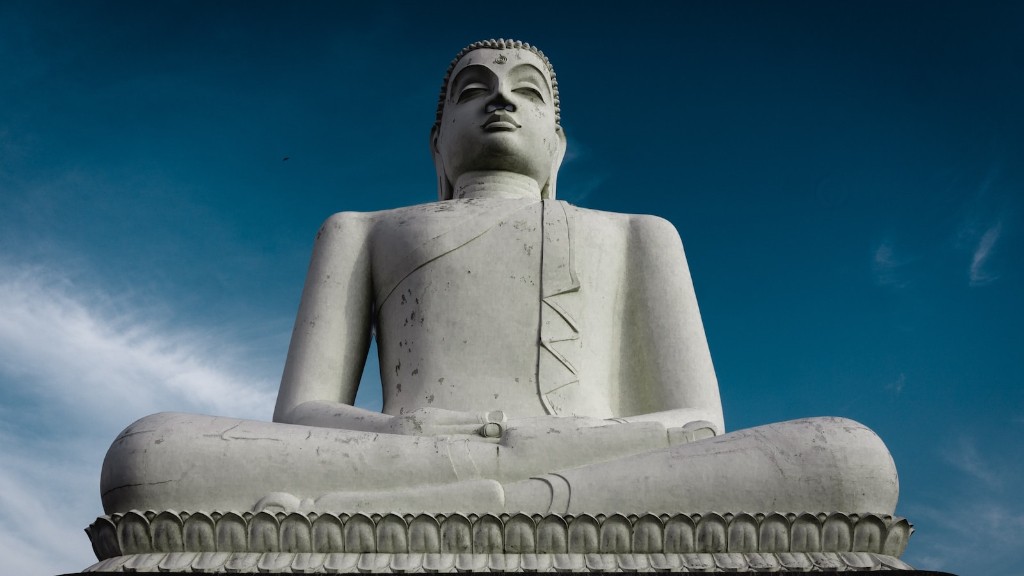Buddhism and psychotherapy are two traditions that share a common concern with the human condition. Both explore the nature of suffering and the possibility of liberation from it. In Buddhism, this liberation is seen as an awakening to the true nature of reality; in psychotherapy, it is viewed as a process of self-realization.
Buddhism and psychotherapy are both concerned with helping people to find inner peace and happiness. Both approaches aim to help people to overcome suffering and to live more fulfilling lives.
What unites Buddhist and psychotherapy?
There are many similarities between Buddhism and psychotherapy, including the importance of clear insight, focused attention, and fundamental shifts in consciousness. Both approaches emphasize the need for individuals to gain a deeper understanding of themselves and their experience in order to make lasting changes.
Buddhism includes an analysis of human psychology, emotion, cognition, behavior and motivation along with therapeutic practices. Buddhist psychology is embedded within the greater Buddhist ethical and philosophical system, and its psychological terminology is colored by ethical overtones.
What is the Buddhist view of psychotherapy
Buddhist psychotherapy is a type of therapy that is based on the Buddhist model of the cause of mental suffering. This type of therapy deals with self-knowledge, thoughts, feelings and actions in order to minimize the psychological distress that a person may be experiencing. Buddhist psychotherapy has been shown to have a positive impact on mental health and can be used to treat a wide range of mental illnesses.
Buddha’s teachings on the mind are very similar to Western psychological concepts. Both acknowledge the importance of the mind and how it affects well-being. Both also study sensation, perception, emotion, and motivation. This shows that there is much common ground between the two fields of study.
What is the connection between Buddhism and mindfulness?
Mindfulness meditation is an important element of the Buddha’s “noble eightfold path” to end suffering and instill wisdom. The goal of mindfulness meditation is to bring the meditator into a state of complete mindfulness, or awareness, of the present moment. In this state, the meditator is able to observe his or her thoughts and emotions without judgment or attachment.
Mindfulness meditation has been shown to be beneficial for both mental and physical health. Studies have shown that mindfulness meditation can help to reduce stress, anxiety, and depression. Mindfulness meditation has also been shown to improve physical health, including reducing blood pressure and chronic pain.
Interrelatedness, or interdependence, is the central insight of Mahayana Buddhism. It means that nothing exists separate from all the other things in the universe. Every person lives only by relying on the support of others.
How did Buddhism contribute to the study of psychology?
Buddhism is a practical psychology because it applies to the three main psychological factors–consciousness, sub-consciousness, and empirical consciousness. Buddhism psycho-analyzes consciousness to explain how mental phenomena work and how they can be improved. This is done through an understanding of the nature of mind and mental states, as well as their interrelationship. Additionally, Buddhism provides a framework for understanding ethical principles and their role in human psychological development.
Buddhist doctrine teaches that happiness comes from inner peace. One of the main ways to achieve inner peace is through meditation. Studies have shown that meditation can have many positive mental health benefits, such as reducing stress, anxiety, and depression.
What is the relationship between psychology and religion
Religion is a complex and integral part of many people’s lives. It can provide a sense of community and belonging, a framework for morality and ethical behaviour, and a source of comfort and support in times of difficulty.
Studying the psychology of religion can help us to understand the psychological factors that underpin religious beliefs and behaviours. This type of study can also reveal how our religious beliefs and behaviours are affected by our individual psychology. Ultimately, this knowledge may help us to reduce the negative impact of religion on society, and to promote its positive influences.
Religion and spirituality can be important parts of some people’s lives, and integrating these themes into therapy may be helpful for some clients. There are a range of ways to integrate religious and spiritual themes into therapy, from asking questions about a client’s beliefs and values to making specific recommendations about religious practices such as meditation or prayer. Therapists should be sensitive to the importance of these themes in their clients’ lives and should respect the client’s right to self-determination in these areas.
Why spirituality is important in psychotherapy?
Spirituality and religion play an important role in many people’s lives, providing them with a source of strength, a way to find meaning in life, and a way to promote healing and well-being. For clients who are spiritual or religious, therapists can help them to explore and connect with their own spiritual beliefs and practices, and to use them in a way that is helpful and supportive.
Our core beliefs are the ideas that we hold about ourselves, others, and the world around us. These beliefs act as a lens through which we see every situation and experience life. In cognitive behavioral therapy (CBT), core beliefs are thought to underlie our automatic thoughts. By understanding and addressing our core beliefs, we can learn to challenge and change the thoughts that lead to negative emotions and behaviors.
What philosophy is similar to Buddhism
Both philosophies advocate for detachment from the material world and emphasize the importance of living in the present moment. Furthermore, both philosophies emphasize the importance of kindness, compassion, and self-control.
Interestingly, both Stoicism and Buddhism were created independently and thousands of miles apart. Buddhism was founded in present-day Nepal around 500 BC and Stoicism began in Athens, Greece around 300 BC.
Despite their different origins, Stoicism and Buddhism share many similarities and provide valuable insights into how to live a good life.
Buddhists see well-being and non-well-being as states of being along a continuum. They see dis-ease as a consequence of ignorance, attachment to ego-self, and delusion, rather than as an illness.
Is Buddhism a religion or psychology?
Buddhism first originated in India in the 6th century BC. It is a non-theistic religion, i.e. it doesn’t believe in a creator God, unlike theistic religions such as Christianity. Buddhism was founded by Siddhartha Gautama (also known as Buddha) who, according to legend, was once a Hindu prince.
The concept of mindfulness can be traced back to the Pali words sati and vipassana. In the Indian Buddhist tradition, sati implies awareness, attention, or alertness, while vipassana refers to insight cultivated by meditation. When applied to daily life, mindfulness entails paying attention to one’s thoughts, feelings, and sensations in a non-judgmental way. The goal is to develop a greater understanding of oneself and the world around them.
What are the 4 foundations of mindfulness in Buddhism
The four domains of mindfulness are body, feelings, mind, and dhammas. In the early Buddhist texts, mindfulness is explained as being established in these four ways:
1. Mindfulness of the body: This refers to being aware of the physical sensations of the body, such as the breath, the heartbeat, and the movement of the limbs.
2. Mindfulness of feelings: This refers to being aware of the emotions and feelings that arise in the mind, such as happiness, sadness, or anger.
3. Mindfulness of the mind: This refers to being aware of the thoughts and mental states that arise in the mind, such as thinking about the past or worrying about the future.
4. Mindfulness of dhammas: This refers to being aware of the universal truths that underlie all experience, such as the impermanence of all things.
The importance of the threefold path is that it is a core Buddhist value that helps to guide individuals on the path to enlightenment. The threefold path includes the practice of moral conduct, meditation and wisdom. This path is important because it helps individuals to develop a deeper understanding of the Buddhist teachings and also allows them to put these teachings into practice in their lives.
Warp Up
There are many ways in which Buddhism and psychotherapy can be seen as united. Both approaches aim to ease suffering and help people to lead more fulfilling lives. Both also emphasize the importance of understanding our minds and how we create our own reality through our thoughts, feelings, and actions. Additionally, both Buddhism and psychotherapy encourage us to develop a more compassionate attitude towards ourselves and others.
In conclusion, Buddhism and psychotherapy share a common goal of helping individuals find inner peace and happiness. Both traditions emphasize the importance of self-awareness and mindfulness in order to achieve these goals. Additionally, both Buddhism and psychotherapy place a strong emphasis on the importance of the present moment. By teaching individuals to live in the present moment and to be mindful of their thoughts and emotions, both traditions aim to help individuals find greater peace and happiness.


